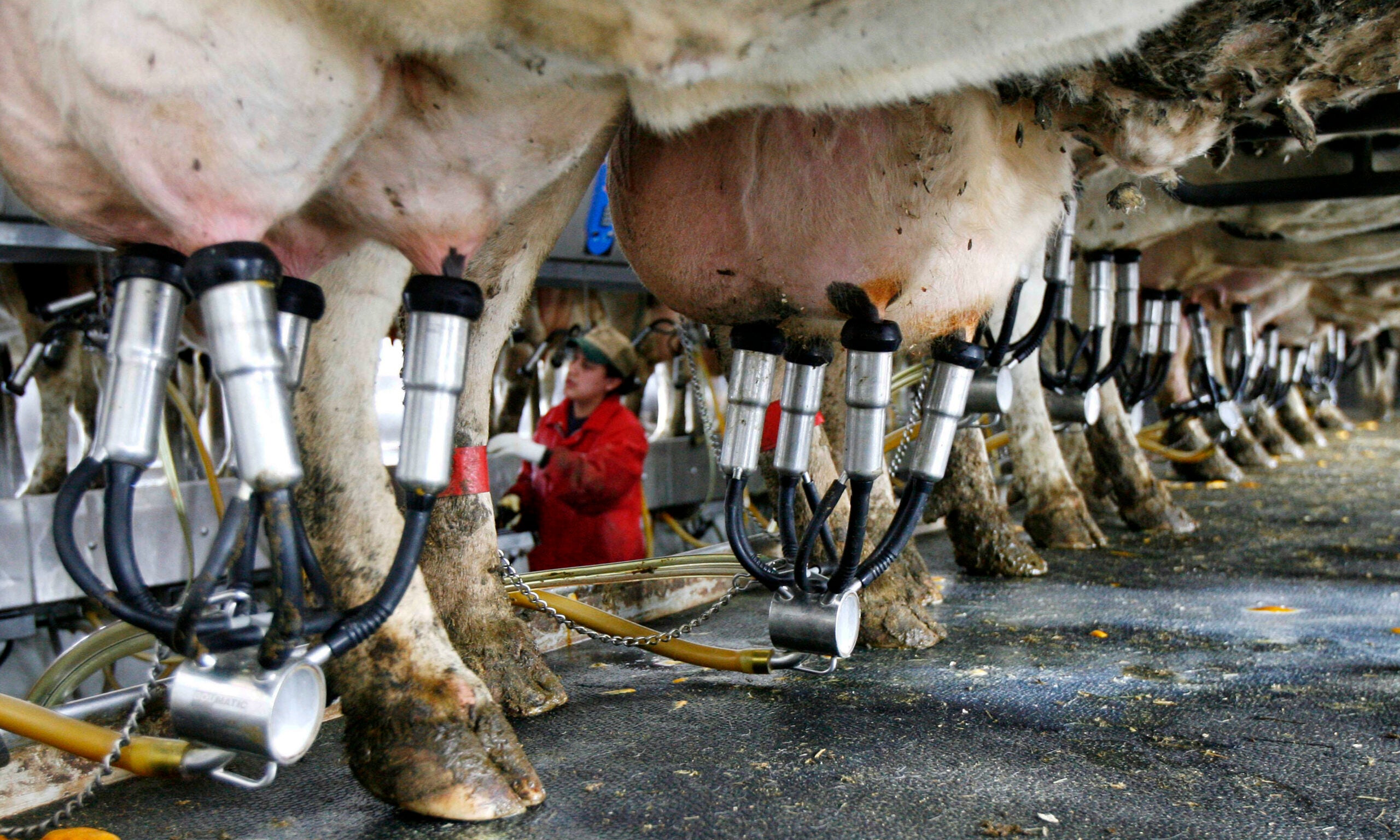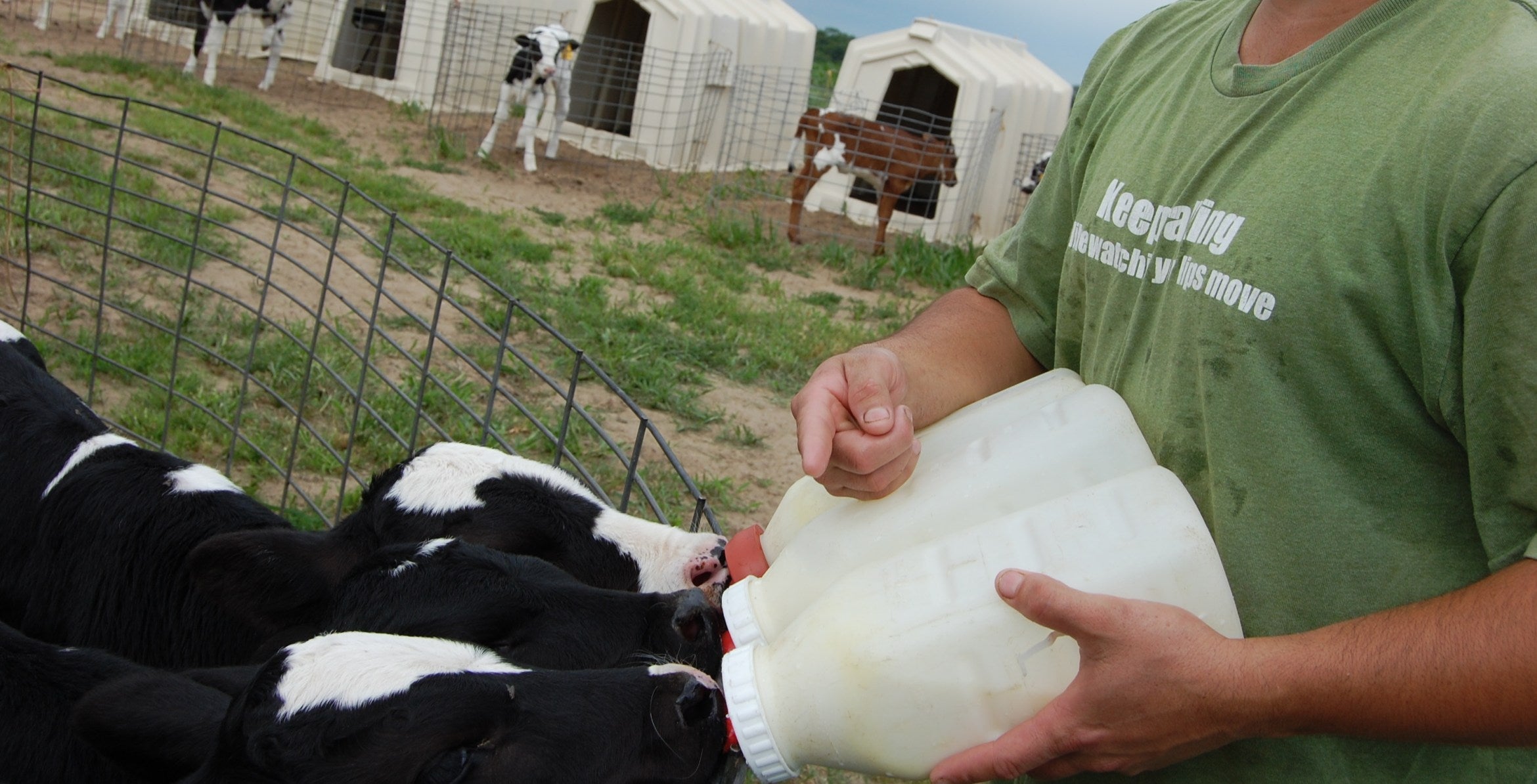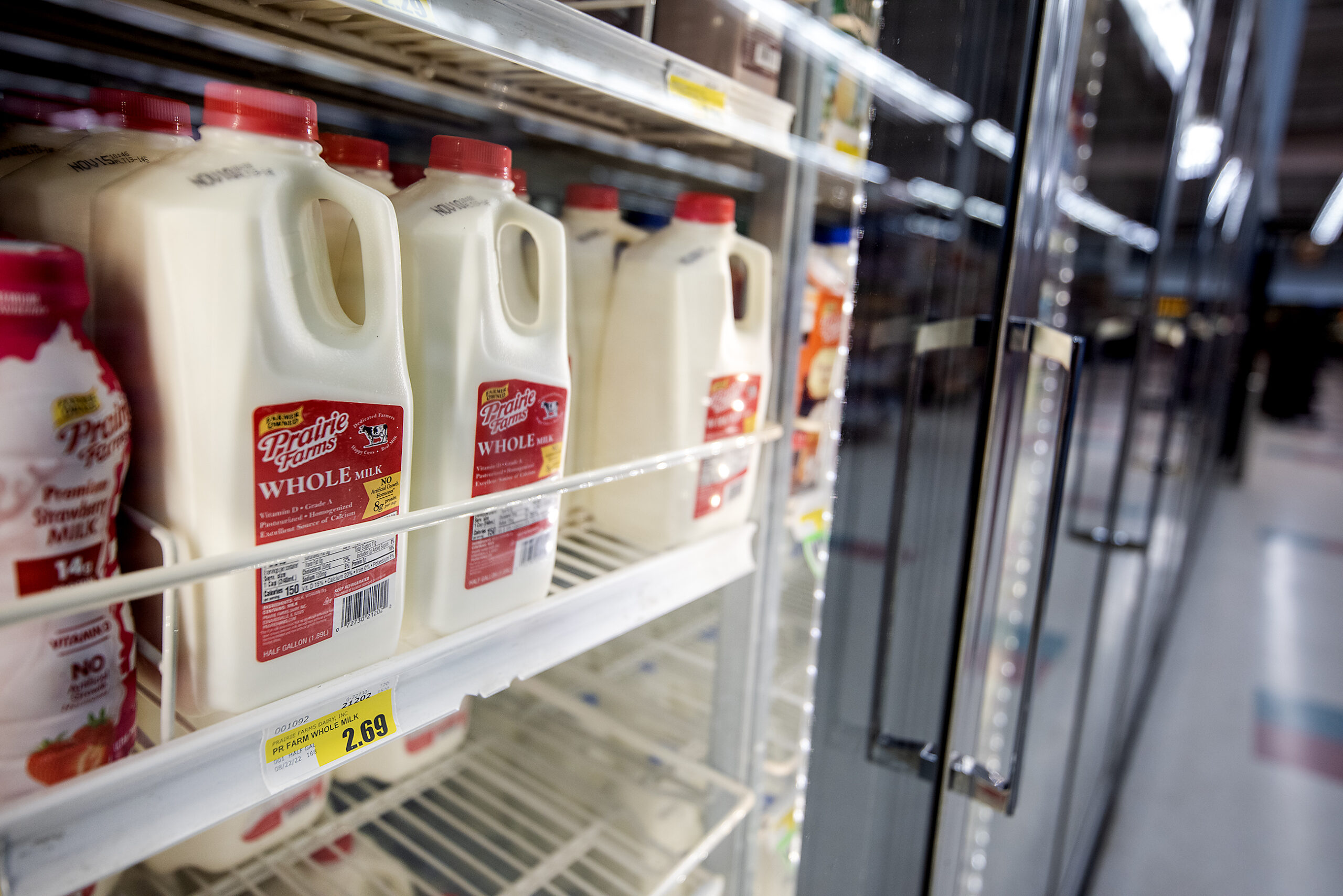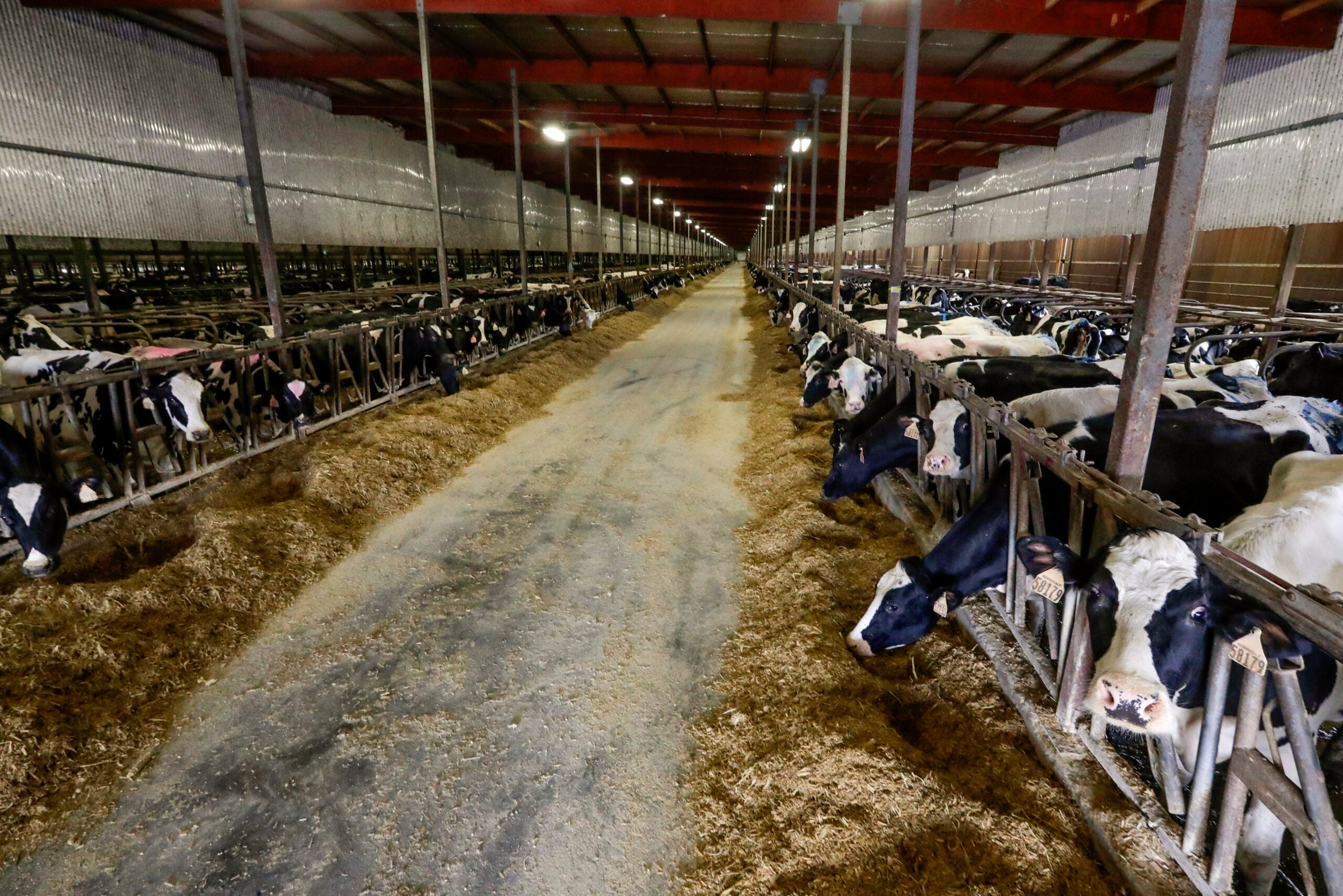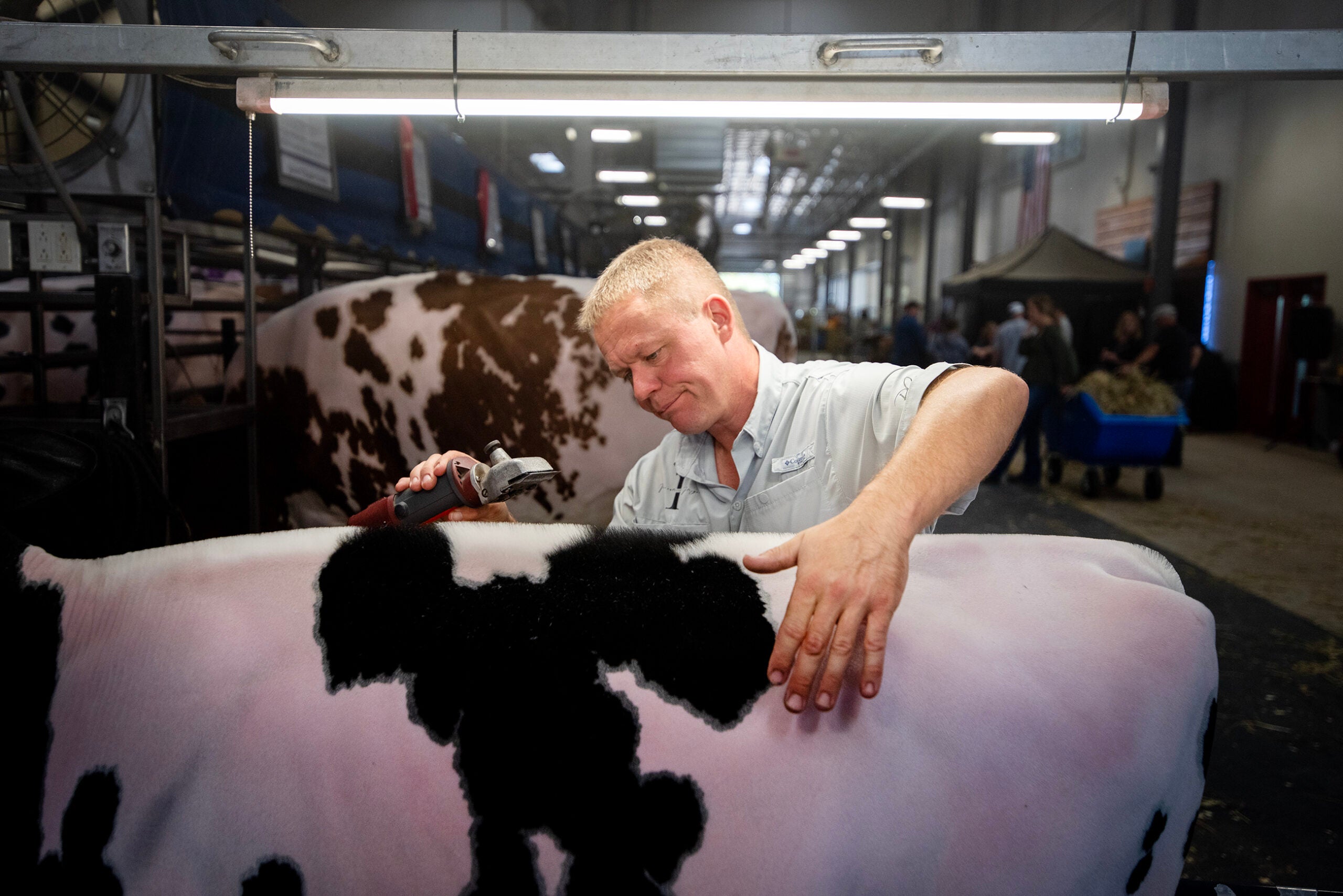Businesses across Wisconsin have struggled to recruit and retain employees during record-low unemployment. The state’s dairy farms and processing plants are no exception.
Sandy Larson is general manager of Larson Acres, a 2,800-cow dairy farm in Evansville with 75 employees. She said the thinking around recruiting and retaining employees has changed in recent years.
“Over the last several years, our engagement and training and opportunities to grow all mean a lot to the employees,” Larson said. “If I can provide a job where they know they have the growth opportunities, they can learn something new and get a promotion, that excites them.”
News with a little more humanity
WPR’s “Wisconsin Today” newsletter keeps you connected to the state you love without feeling overwhelmed. No paywall. No agenda. No corporate filter.
She said finding workers hasn’t been an issue for her farm, though she knows other dairy producers that have to actively look for applicants. But Larson said holding on to the employees they’ve already trained is a top concern.
She said for years, the farm has worked to boost morale through an annual appreciation event, employee of the month program and fun contests around holidays like Halloween.
As the labor market has gotten more challenging, Larson said she’s thinking about the whole package of benefits she can offer workers, from traditional items like health insurance and paid time-off to more unique benefits like an allowance for work clothes. She said providing rental housing near the farm has become an important benefit because of the shortage of affordable options in the area.
“Sometimes we’re competing with very high wages at nearby manufacturers or whatever and that’s really hard,” she said. “They’ve got to want to work on a farm. They know there’s going to be long hours, they know they’re going to get dirty, so it’s got to be more than just a job for them.”
Larson said it’s not just the hands-on farm labor like milking cows and driving a tractor where she has to fill jobs. She said finding IT professionals to keep the farm’s technology running is one of the most challenging areas to hire.
“We’ve got a computer program for (milking) the cows, we’ve got a program for feeding the cows, we’ve got a program in the tractors for planting the corn and harvesting the corn and the hay,” she said. “We use a ton of Excel sheets. But finding somebody that really understands all those different areas, that’s difficult.”
Like any employer, Larson said finding ways to support employees has become a central part of her farm’s budget discussions and their plans for growth in the coming years.
Agriculture across the United States has become increasingly dependent on workers from other countries to fill jobs. But Larson said seasonal, guest worker programs like H-2A often don’t work for dairy farms that milk cows all year long.
“It takes a month or two to get the training complete, they finally really get the hang of it and then they have to go home on an H-2A visa,” she said.
Farms aren’t the only part of the dairy industry struggling with labor. Leaders in the dairy industry have reported that processing plants have had to cut back operating hours because of a shortage of workers. That’s part of what has contributed to the oversupply of milk that has weighed down milk prices in recent months.
Leonard Polzin is dairy markets and policy specialist for the University of Wisconsin-Madison’s Division of Extension. He told Wisconsin Public Radio’s “Central Time” that most dairy processors have ongoing recruitment efforts and continue to think about ways to compete with employers hiring from the same labor pool.
But he said processors are also starting to pay more attention to advancements in technology and how automation could make jobs easier or replace them altogether.
“If they can take what once was done by 10 people and do it by one person through the advent of additional investment, that’s always a topic of discussion,” he said.
Adding automation or other technology isn’t a simple fix. Polzin said high interest rates and uncertainty about demand for dairy products on the world market mean many processors are holding off on new investments.
Wisconsin Public Radio, © Copyright 2026, Board of Regents of the University of Wisconsin System and Wisconsin Educational Communications Board.
